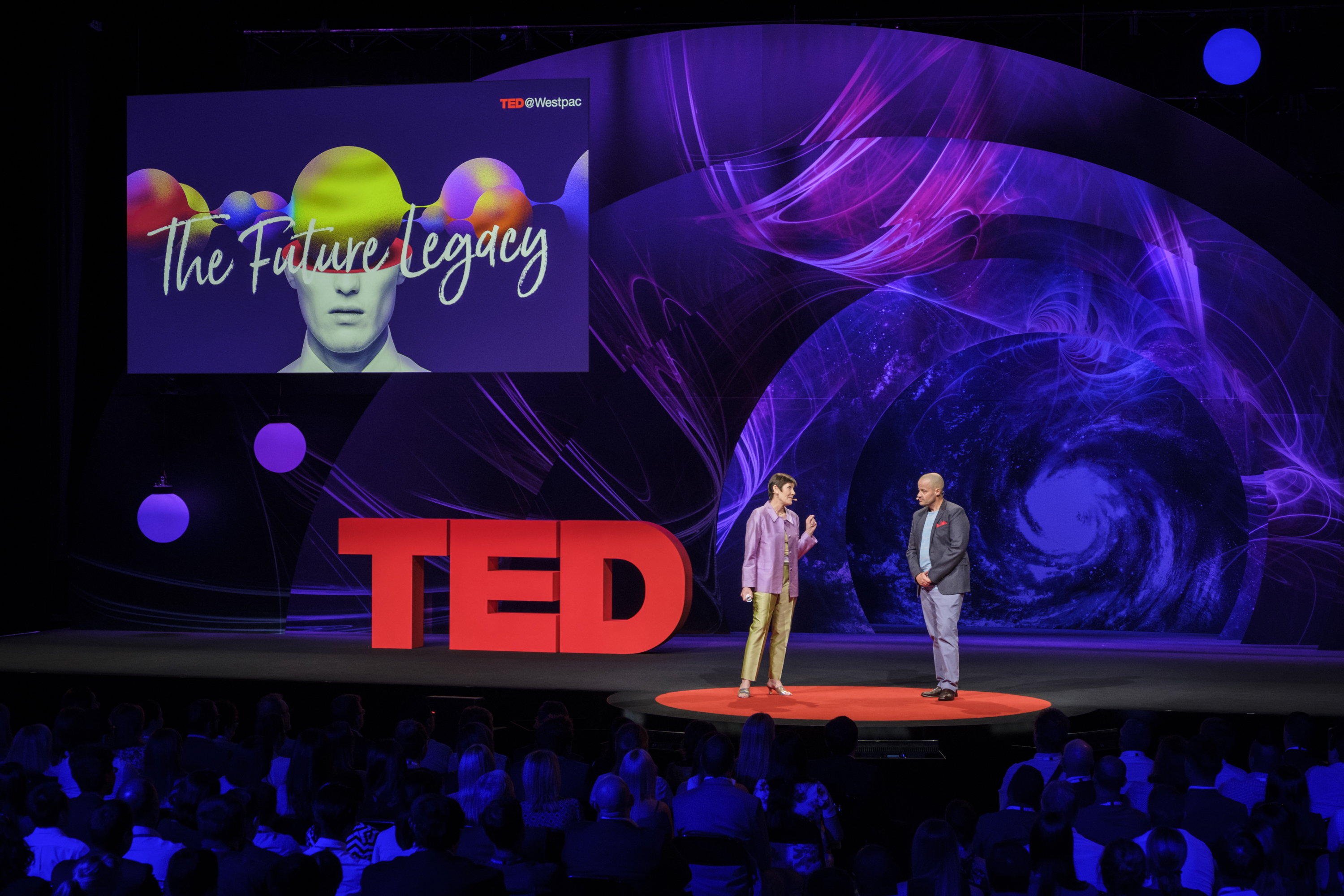
Cyndi Stivers and Adam Spencer host TED@Westpac — a day of talks and performances themed around “The Future Legacy” — in Sydney, Australia, on Monday, December 11th. (Photo: Jean-Jacques Halans / TED)
Legacy is a delightfully complex concept, and it’s one that the TED@Westpac curators took on with gusto for the daylong event held in Sydney, Australia, on Monday December 11th. Themed around the idea of “The Future Legacy,” the day was packed with 15 speakers and two performers and hosted by TED’s Cyndi Stivers and TED speaker and monster prime number aficionado Adam Spencer. Topics ranged from education to work-health balance to designer babies to the importance of smart conversations around death.
For Westpac managing director and CEO Brian Hartzer, the day was an opportunity both to think back over the bank’s own 200-year-legacy — and a chance for all gathered to imagine a bold new future that might suit everyone. He welcomed talks that explored ideas and stories that may shape a more positive global future. “We are so excited to see the ripple effect of your ideas from today,” he told the collected speakers before introducing Aboriginal elder Uncle Ray Davison to offer the audience a traditional “welcome to country.”
And with that, the speakers were up and running.
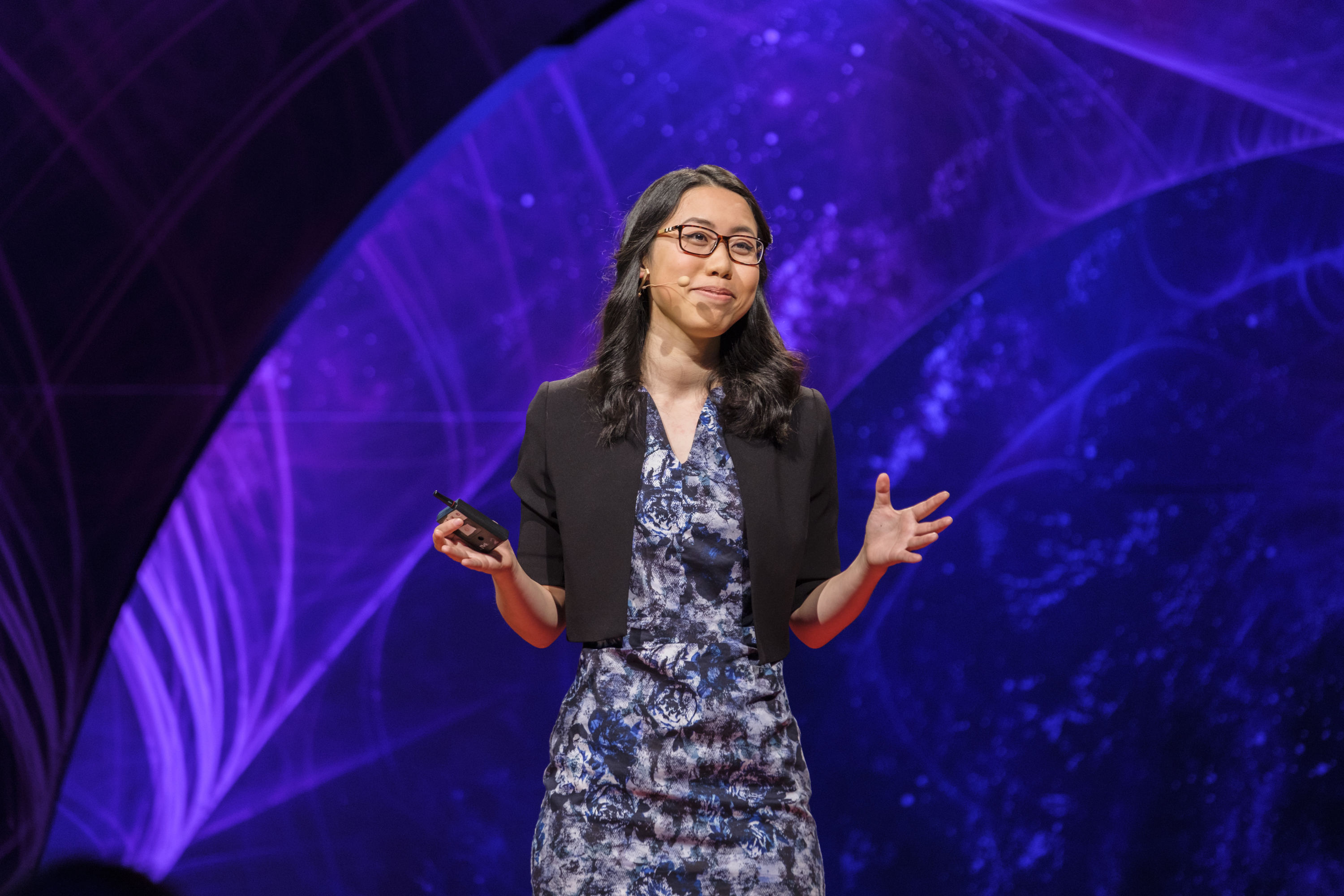
“Being an entrepreneur is about creating change,” says Linda Zhang. She suggests we need to encourage the entrepreneurial mindset in high-schoolers. (Photo: Jean-Jacques Halans / TED)
Ask questions, challenge the status quo, build solutions. Who do you think of when you hear the word “entrepreneur?” Steve Jobs, Mark Zuckerberg, Elon Musk and Bill Gates might come to mind. What about a high school student? Linda Zhang might just have graduated herself but she’s been taking entrepreneurial cues from her parents, who started New Zealand’s second-largest thread company. Zhang now runs a program to pair students with industry mentors and get them to work for 48 hours on problems they actually want to solve. The results: a change in mindset that could help prepare them for a tumultuous but opportunity-filled job market. “Being an entrepreneur is about creating change,” Zhang says. “This is what high school should be about … finding things you care about, having the curiosity to learn about those things and having the drive to take that knowledge and implement it into problems you care about solving.”
Should we bribe kids to study math? In this sparky talk, Mohamad Jebara shares a favorite quote from fellow mathematician Francis Su: “We study mathematics for play, for beauty, for truth, for justice, and for love.” Only problem: kids today, he says, often don’t tend to agree, instead finding math “difficult and boring.” Jebara has a counterintuitive potential solution: he wants to bribe kids to study math. His financial incentive plan works like this: his company charges parents a monthly subscription fee; if students complete their weekly math goal then the program refunds that amount of the fee directly into the student’s bank account; if not, the company pockets the profit. Ultimately, Jebara wants kids to discover math’s intrinsic worth and beauty, but until they get there, he’s happy to pay them. And this isn’t just about his own business model. “Unless we find a way to improve student engagement with mathematics, we’ll have not only a huge skills shortage crisis, but a fickle population easily manipulated by whoever can get the most airtime,” he says.
You, cancer and the workplace. When lawyer Sarah Donnelly was diagnosed with breast cancer, she turned to her friends and family for support — but she also sought refuge in her work. “My job and my coworkers would make me feel valuable and human at times when I would have otherwise felt like a statistic,” she says. “Work gave me focus and stability when I was dealing with so many unknowns and difficult personal decisions.” But, she says, not all employers realize that work can be a sanctuary for the sick, and often — believing themselves polite and thoughtful — cast out their employees. Now, Donnelly is striving to change the experiences of individuals coping with serious illness — and the perceptions others might have of them. Together with a colleague, she created a “Working with Cancer” toolkit that provides a framework and guidance for all those professionally involved in an employee’s life, and she is traveling to different companies around Australia to implement it.
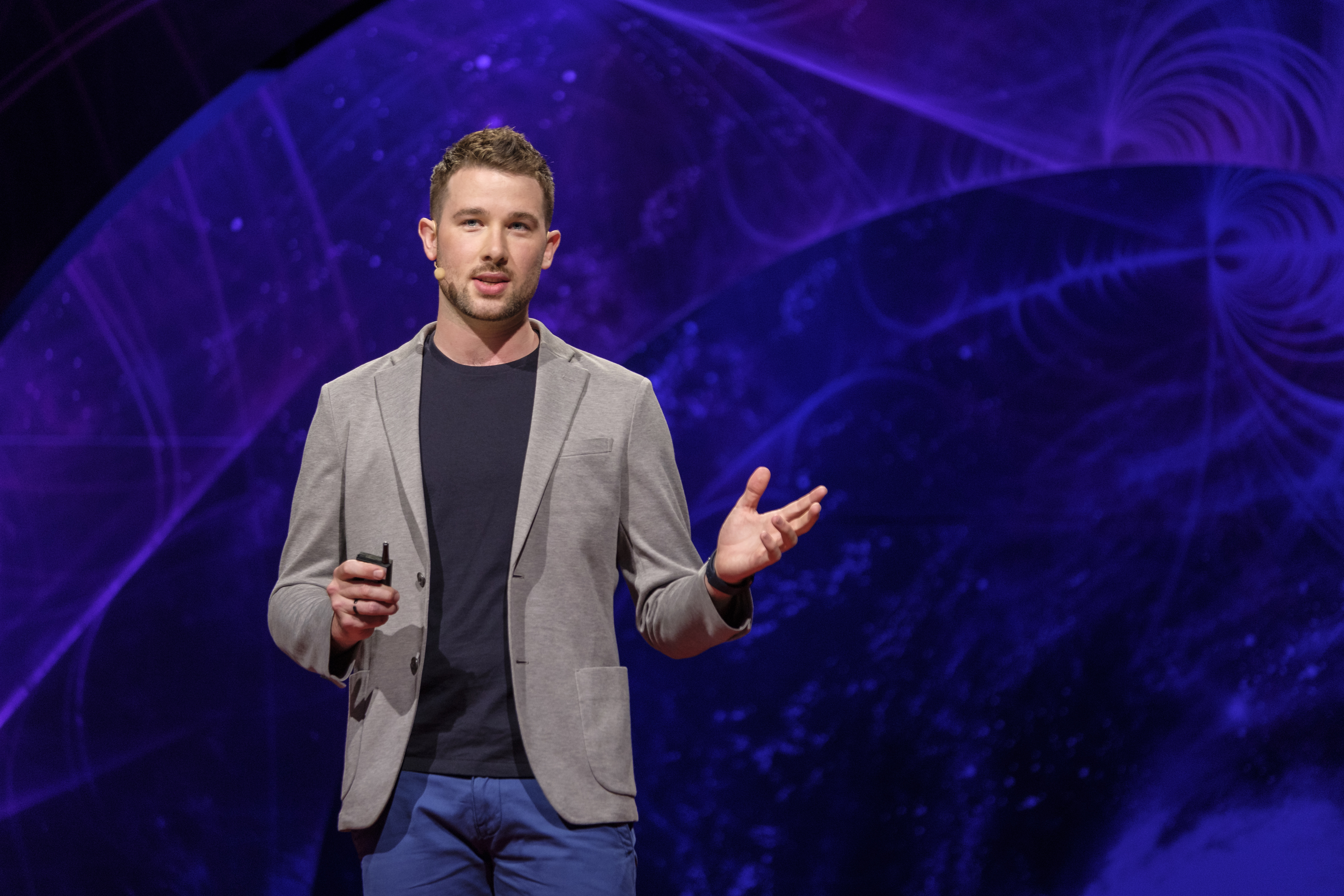
Digital strategist Will Jenkins asks that we need to think about what we really want from life, not just our day-to-day. (Photo: Jean-Jacques Halans / TED)
The connection between time and money. We all need more time, says digital strategist Will Jenkins, and historically we’ve developed systems and technologies to save time for ourselves and others by reducing waste and inefficiency. But there’s a problem: even after spending centuries trying to perfect time-saving techniques, it too often still doesn’t feel like we’re getting anywhere. “As individuals, we’re busier than ever,” Jenkins points out, before calling for us to look beyond specialized techniques to think about what we actually really want from life itself, not just our day-to-day. In taking a holistic approach to time, we might, he says, channel John Maynard Keynes to figure out new ways that will allow all of us “to live wisely, agreeably, and well.”
Creating a digital future for Australia’s First People. Aboriginal Australian David Unaipon (1862-1967) was called his country’s Leonardo da Vinci — he was responsible for at least 19 inventions, including a tool that led to modern sheep shears. But according to Westpac business analyst Michael Mieni, we need to find better ways to encourage future Unaipons. Right now, he says, too many Indigenous Australians are on the far side of the digital divide, lacking access to computers and the Internet as well as basic schooling in technology. Mieni was the first Indigenous IT honors students at the University of Technology Sydney and he makes the case that tech-savvy Indigenous Australians are badly needed to serve as role models and teachers, as inventors of ways to record and promote their culture and as guardians of their people’s digital rights. “What if the next ground-breaking idea is already in the mind of a young Aboriginal student but will never surface because they face digital disadvantage or exclusion?” he asks. Everyone in Australia — not just the First Peoples — gains when every citizen has the opportunity and resources to become digitally literate.
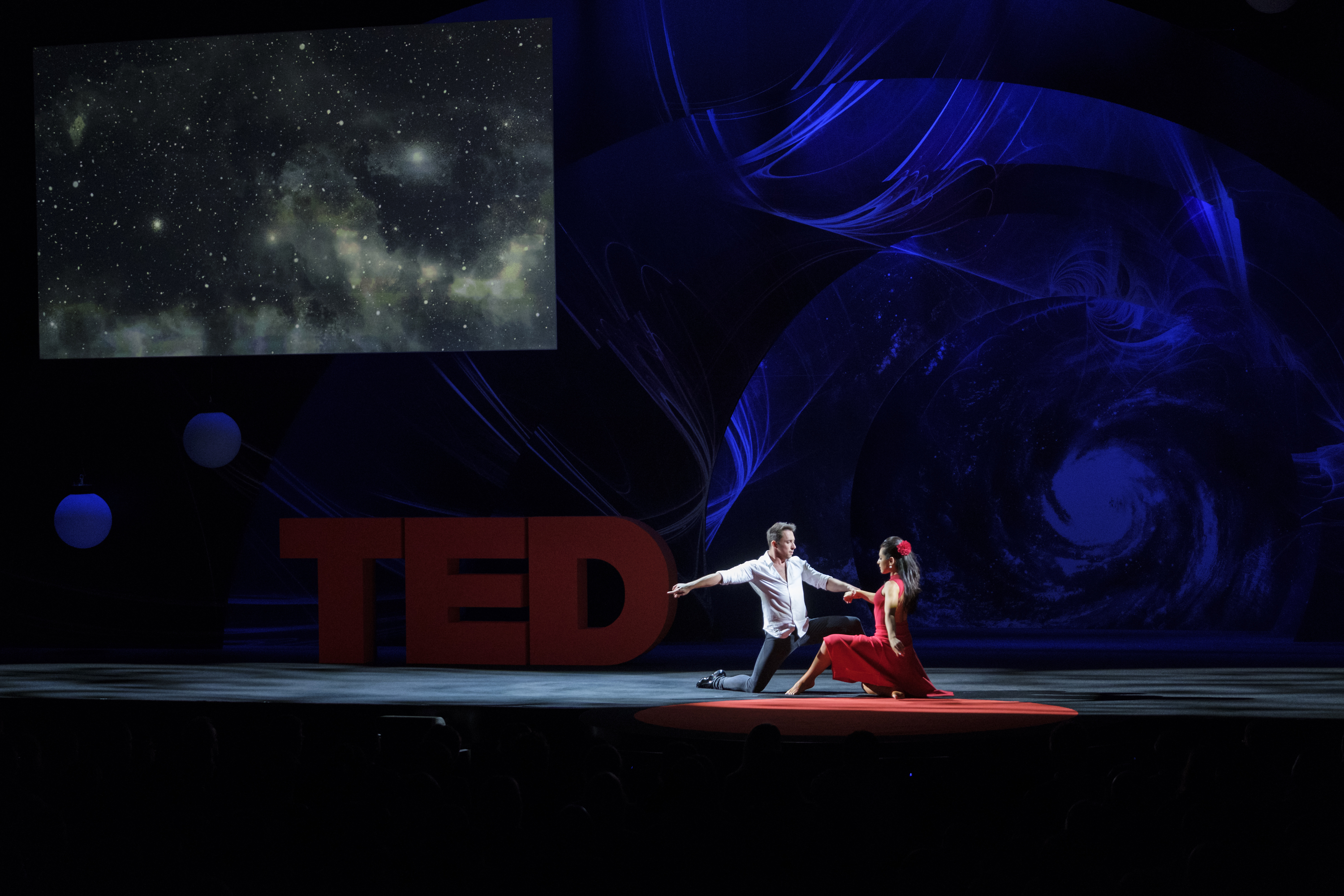
Shade Zahrai and Aric Yegudkin perform a gorgeous, sensual dance at TED@Westpac. (Photo: Jean-Jacques Halans / TED)
The beauty of a dance duet. “Partner dance embodies the coming together of two people,” Shade Zahrai‘s voice whispers to a dark auditorium as she and her partner take the TED stage. In the middle of session one, the pair perform a gorgeous and sensual modern dance, complete with Zahrai’s recorded voiceover explaining the coordination and unity that partner dance requires of its participants.
The power of inclusiveness. Inclusion strategist Hayley Yeates shares how her identity as a proud Australian was dimmed by prejudice shown towards her by those who saw her as Asian. When in school, she says, fellow students didn’t want to associate with her in classrooms, while she didn’t add a picture to her LinkedIn profile for fear her race would deem her less worthy of a job. But Yeates focuses on more than the personal stories of those who’ve been dubbed an outsider, and makes the case that diversity leads to innovation and greater profitability for companies. She calls for us all to sponsor safe spaces where authentic, unrestrained conversations about the barriers faced by cultural minorities can be held freely. And she invites leaders to think about creating environments where people’s whole selves can work, and where an organization can thrive because of, not in spite of, its employees’ differences.
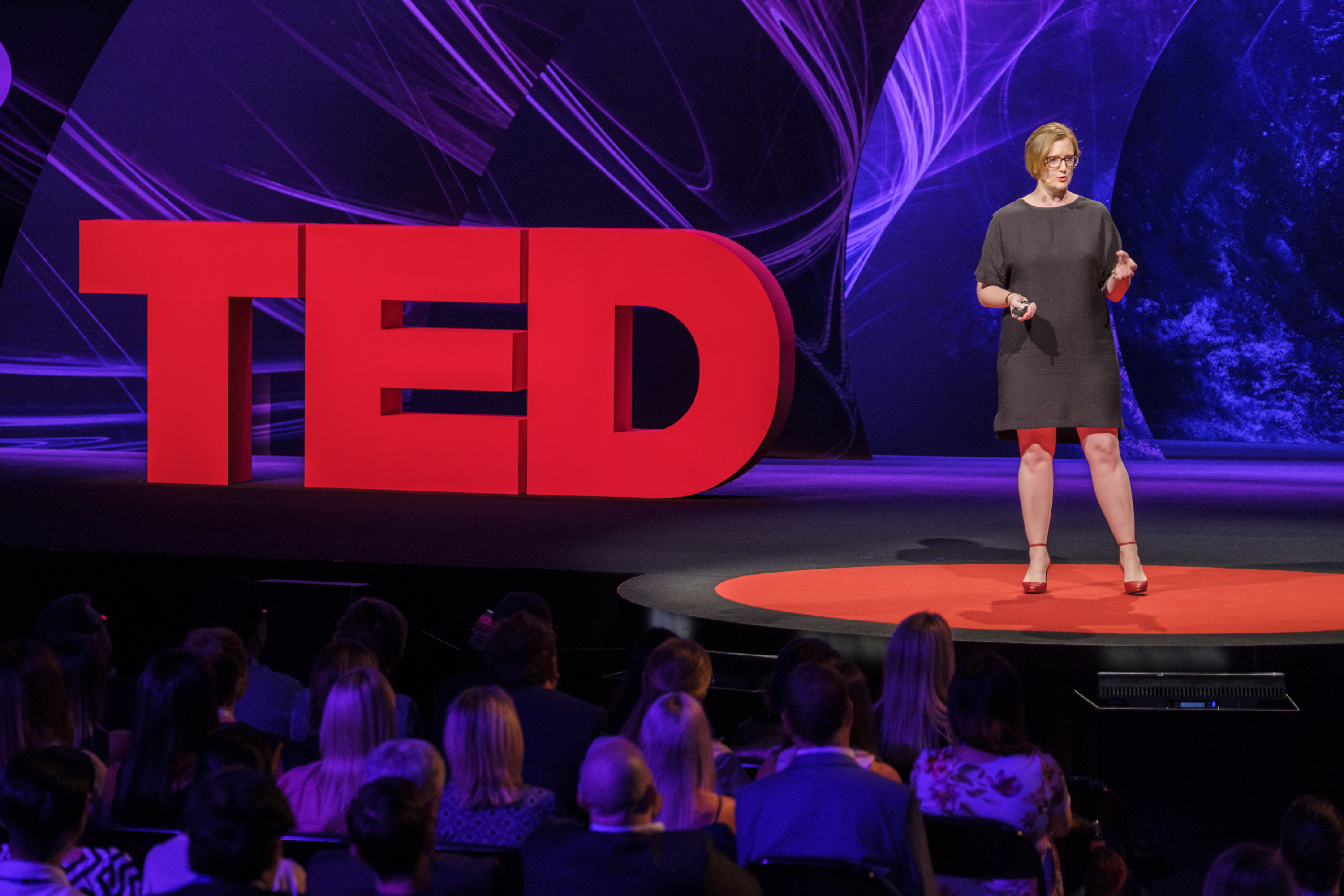
Olivia Tyler tracks the complexity of global supply chains, looking to develop smart technology that can allow both corporations and consumers to understand buying decisions. (Photo: Jean-Jacques Halans / TED)
How to do yourself out of a job. As a sustainability practitioner, Olivia Tyler is trying hard to develop systems that will put her out of work. Why? For the good of us all, of course. And how? By encouraging all of us to ask questions about where what we buy, wear or eat comes from. Tyler tracks the fiendish complexity of today’s global supply chains, and she is attempting to develop smart technology that can allow both corporations and consumers to have the visibility they need to understand the buying decisions they make. When something as ostensibly simple as a baked good can include hundreds of data points about the ingredients it contains — a cake can be a minefield, she jokes — it’s time to open up the cupboard and use tech such as the blockchain to crack open the sustainability code. “We can adopt new and exciting ways to change the game on how we conduct ourselves as corporates and consumers across our increasingly smaller world,” she promises.
Can machine intelligence liberate human purpose? Much has been made of the threat robots place to the very existence of certain jobs, with some estimates reckoning that as much as 80% of low skill jobs have already been automated. Self-styled “datapreneur” Tomer Garzberg shares how he researched 11,000 of the world’s most widely held jobs to create the “Short-Term Automation Susceptibility Index” to identify the types of role that might be up for automation next. Perhaps unsurprisingly, highly specialized roles held by those such as neurosurgeons, chemical engineers and, well, acrobats face the least risk of being automated, while even senior blue collar positions or standard white collar roles such as pharmacists, accountants and health inspectors can expect a 25% shrinkage over the next 10 years. But Garzberg believes that we can — must — embrace this cybernated future.”Prepare your family to be okay with change, as uncomfortable as it may be,” he says. “We’ll likely be switching careers far more frequently in the near future.”
Everything’s gonna be alright. After a quick break and a breather, Westpac’s own Rowan Fitzpatrick and his band Heart of Mind played in session two with a sweet, uplifting rock ballad about better days and leaning on one another with love and hope. “Keep looking forward / Don’t lose your grip / One step at a time,” the trained jazz singer croons.
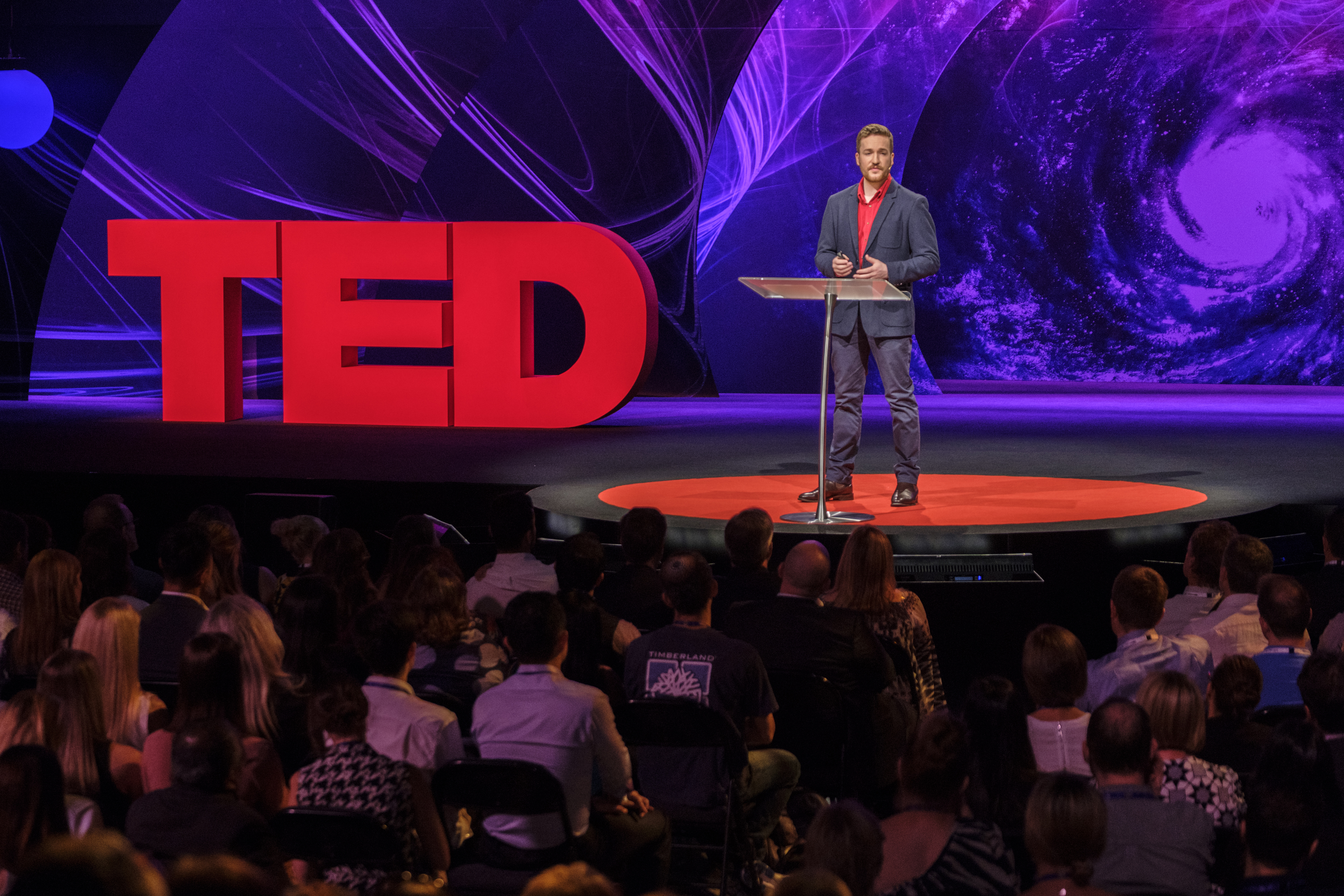
Alastair O’Neill shares the ethical wrangling his family undertook as they figured out how they felt about potentially eradicating a debilitating disease with gene editing. (Photo: Jean-Jacques Halans / TED)
You have the ability to end a hereditary disease. Do you take it? “Recently I had to sign a form promising that I wouldn’t have sex with my wife,” says a deadpan Alastair O’Neill as he kicks off the session’s talks. “Why? Because we decided to have a baby.” He waits a beat. “Let me rewind.” As the audience settles in for a rollercoaster talk of emotional highs and lows, he explains his family’s journey through the ethical minefield of embryonic genetic testing, also known as preimplantation genetic diagnosis or PGD. It was a journey prompted by a hereditary condition in his wife’s family — his father-in-law Phil had inherited the gene for retinal dystrophy and was declared legally blind at 30 years old. The odds that his own young family would have a baby either carrying or inheriting the disease were as low as one in two. In this searingly personal talk, O’Neill shares the ups and downs of both the testing process and the ethical wrangling that their entire family undertook as they tried to figure out how they felt about potentially eradicating a debilitating disease. Spoiler alert: O’Neill is in favor. “PGD gives couples the ability to choose to end a hereditary disease,” he says. “I think we should give every potential parent that choice.”
A game developer’s solution to the housing crisis. When Sarah Murray wanted to buy her first house, she discovered that home prices far exceeded her budget — and building a new house would be prohibitively costly and time-consuming. Frustrated by her lack of self-determination, Murray decided to create a computer game to give control back to buyers. The program allows you to design all aspects of your future home (even down to attention to price and environmental impact) and then delivers the final product directly to you in modular components that can be assembled onsite. Murray’s innovative idea both cuts costs and makes more sustainable dwellings; the first physical houses should be ready by 2018. But the digital housing developer isn’t done yet. Now she is working on adapting the program and investing in construction techniques such as 3D printing so that when a player designs and builds a home, they can also contribute to a home for someone in need. As she says, “I want to put every person who wants one in a home of their own design.”
Tough guys need mental-health help, too. In 2013 in Castlemaine, Victoria, painter and decorator Jeremy Forbes was shaken when a friend and fellow tradie (or tradesman), committed suicide. But what truly shocked him were the murmurs he overheard at the man’s wake — people asking, “Who’s next?” Tradies deal with the same struggles faced by many — depression, alcohol and drug dependency, gambling, financial hardship — but they often don’t feel comfortable opening up about them. “You’re expected to be silent in the face of adversity,” says Forbes. So he and artist Catherine Pilgrim founded HALT (Hope Assistance Local Tradies), a mental health awareness organization for tradie men and women, apprentices, builders, farmers, and their partners. HALT meets people where they are, hosting gatherings at hardware stores, football and sports clubs, and vocational training facilities. There, people learn about the warning signs of depression and anxiety and the available services. According to Forbes, who received a Westpac Social Change Fellowship in 2016, HALT has now held around 150 events, and he describes the process as both empowering and cathartic. We need to know how to respond if people are not OK, he says.
The conversation about death you need to have. “Most of us don’t want to acknowledge death, we don’t want to plan for it, and we don’t want to discuss it with the most important people in our lives,” says mortal realist and portfolio manager Michelle Knox. She’s got stats to prove it: 45% of people in Australia over the age of 18 don’t have a legal will. But dying without one is complicated and expensive for those left behind, and just one reason Knox believes it’s time we take ownership of our own deaths. Others include that talking about death before it happens can help us experience a good death, reduce stress on our loved ones, and also help us support others who are grieving. Knox experienced firsthand the power of talking about death ahead of time when her father passed away earlier this year. “I discovered this year it’s actually a privilege to help someone exit this life and although my heart is heavy with loss and sadness, it is not heavy with regret,” she says, “I knew what Dad wanted and I feel at peace knowing I could support his wishes.”
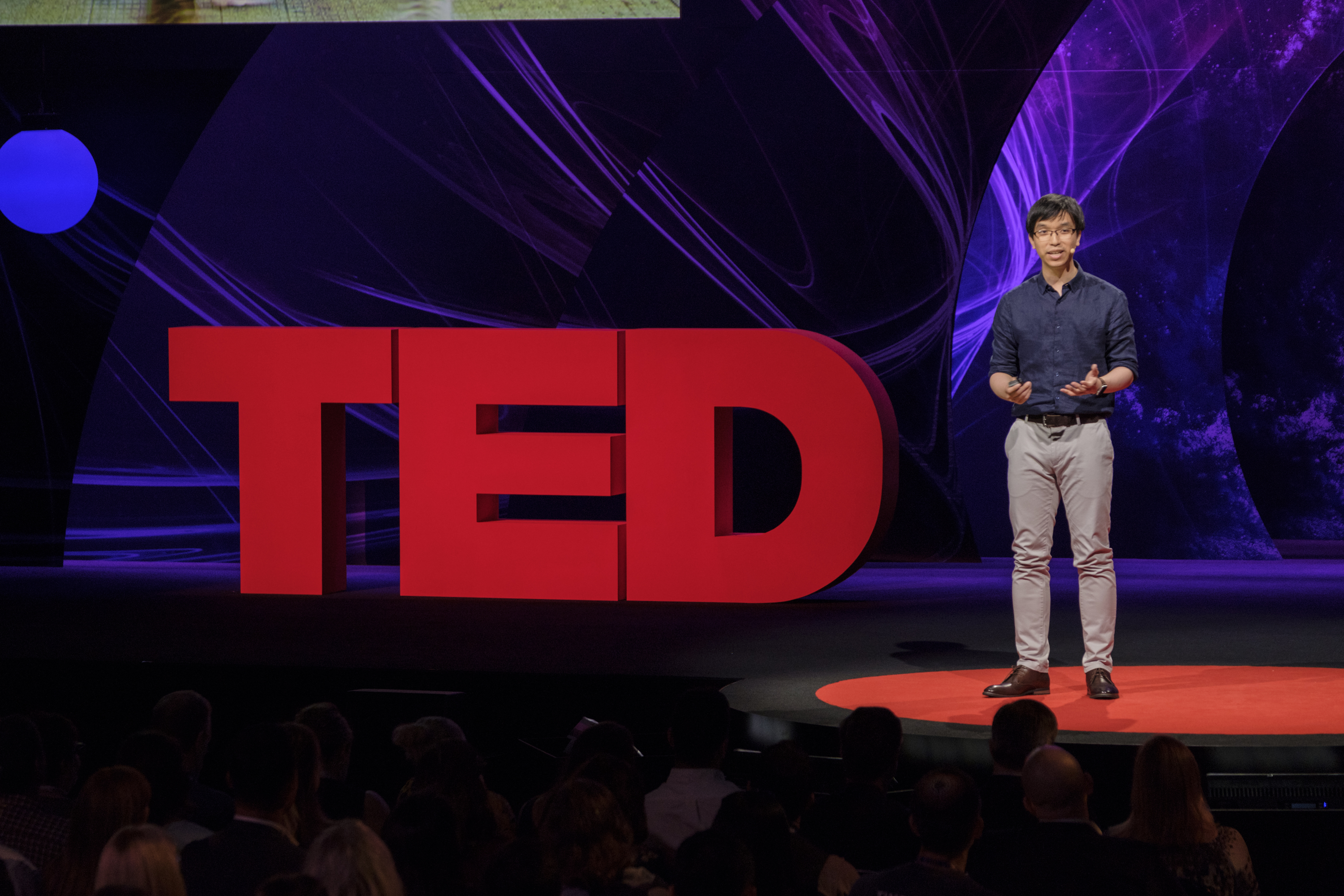
“What would water do?” asks Raymond Tang. “This simple and powerful question has changed my life for the better.” (Photo: Jean-Jacques Halans / TED)
The philosophy of water. How do we find fulfillment in a world that’s constantly changing? IT strategy manager and “agent of flow” Raymond Tang struggled mightily with this question — until he came across the ancient Chinese philosophy of the Tao Te Ching. In it, he found a passage comparing goodness to water and, inspired, he’s now applying the concepts to his everyday life. In this charming talk, he shares three lessons he’s learned so far from the “philosophy of water.” First, humility: in the same way water helps plants and animals grow without seeking reward, Tang finds fulfillment and meaning in helping others overcome their challenges. Next, harmony: just as water is able to navigate its way around obstacles without force or conflict, Tang believes we can find a greater sense of fulfillment in our endeavors by shifting our focus away from achieving success and towards achieving harmony. Finally, openness: water can be a liquid, solid or gas, and it adapts to the shape in which it’s contained. Tang finds in his professional life that the teams most open to learning (and un-learning) do the best work. “What would water do?” Tang asks. “This simple and powerful question has changed my life for the better.”
With great data comes great responsibility. Remember the hacks on companies such as Equifax and JP Morgan? Well, you ain’t seen nothing yet. As computer technology becomes more powerful (think quantum) the systems we use to protect our wells of data become ever more vulnerable. However, there is still time to plan countermeasures against the impending data apocalypse, reassures encryption expert Vikram Sharma. He and his team are designing security devices and programs that also rely on quantum physics to power a defense against the most sophisticated attacks. “The race is on to build systems that will remain secure in the face of rapid technological advance,” he says.
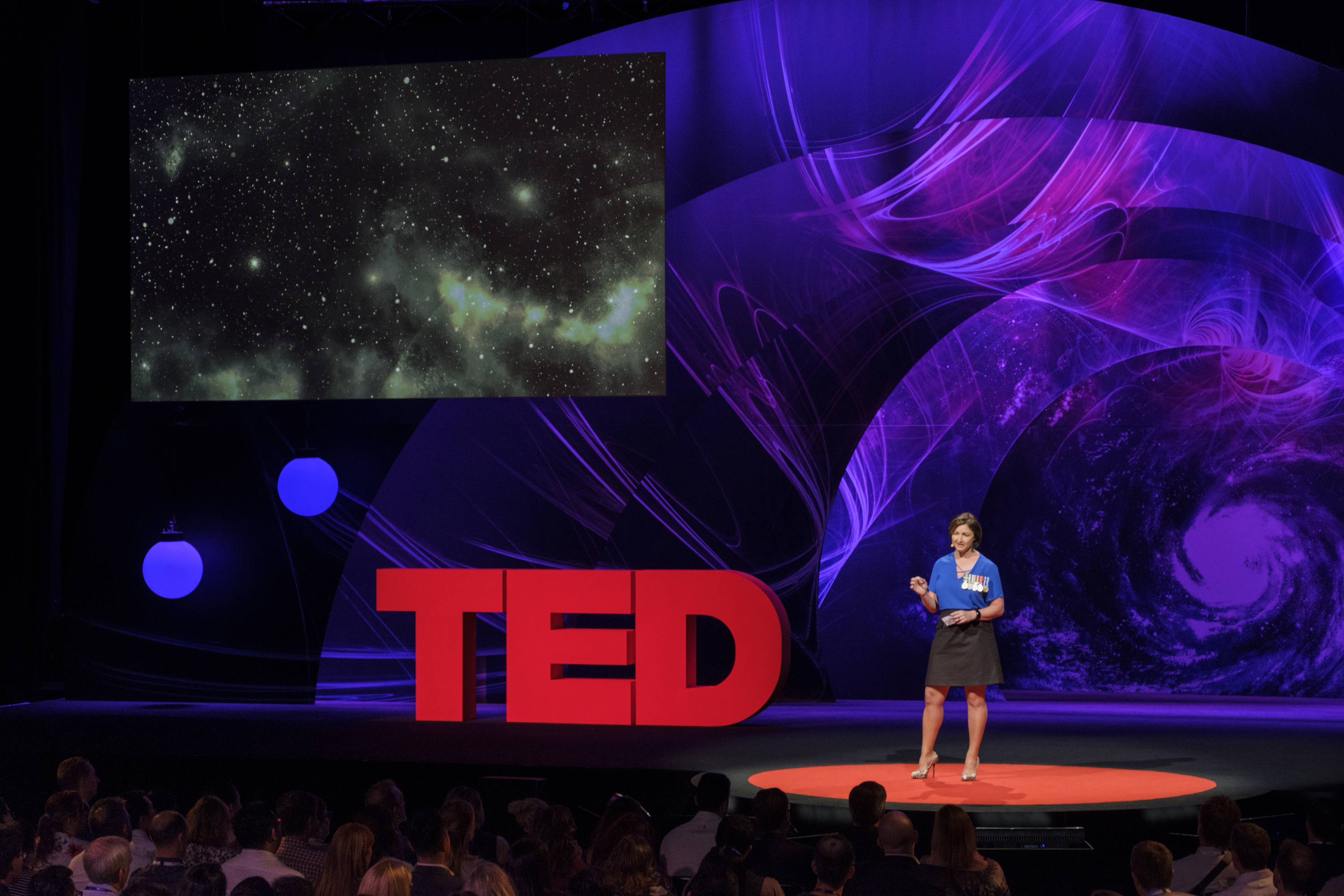
Rach Ranton brings the leadership lessons she learned in the military to corporations, suggesting that leaders succeed when everyone knows the final goal they’re working toward. (Photo: Jean-Jacques Halans / TED)
Leadership lessons from the front line. How does a leader give their people a sense of purpose and direction? Rach Ranton spent more than a decade in the Australian Army, including tours of Afghanistan and East Timor. Now, she brings the lessons she learned in the military to companies, blending organizational psychology aimed at corporations with the planning and best practices of a well-oiled military unit. Even in a situation of extreme uncertainty, she says, military units function best if everyone understands the leader’s objective exactly as well as they understand their own role, not just their individual part to play but also the whole. She suggests leaders spend time thinking about how to communicate “commander’s intent,” the final goal that everyone is working toward. As a test, she asks: If you as a leader were absent from the scene, would your team still know what to do … and why they were doing it?